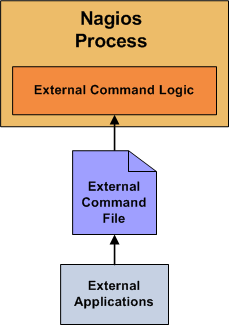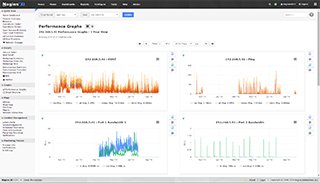
External Commands
Need Help Configuring Nagios?
Our tech support team is happy to help you with any questions you might have. Contact us on our online support forum at https://support.nagios.com/forum/
Nagios XI Makes Monitoring Easier:
Nagios XI is the easy-to-use, enterprise version of Nagios that features:
- Web-Based Configuration provides advanced configuration features
- Monitoring Wizards make it easy to monitor new devices, applications, and services
- Customizable Dashboards allow for per-user customization
- Integrated Performance Graphs provide trending and capacity planning information
- Advanced Reports provide data insight and exporting capabilities
- Data Visualizations enable powerful analysis of patterns and problems
- Nagios Core Import functionality makes it easy to migrate from Nagios Core
- ... and many other features
Download a free 30-day trial to give Nagios XI a spin.
Inquire today and let our Quickstart team help you get started with Nagios XI
 Up To: Contents
Up To: Contents
 See Also: Passive Checks, Adaptive Monitoring
See Also: Passive Checks, Adaptive Monitoring
Introduction
Nagios can process commands from external applications (including the CGIs) and alter various aspects of its monitoring functions based on the commands it receives. External applications can submit commands by writing to the command file, which is periodically processed by the Nagios daemon.

Enabling External Commands
In order to have Nagios process external commands, make sure you do the following:
- Enable external command checking with the check_external_commands option.
- Specify the location of the command file with the command_file option.
- Setup proper permissions on the directory containing the external command file, as described in the quickstart guide.
When Does Nagios Check For External Commands?
- Beginning with Nagios Core 4, external commands are processed as soon as they are received.
Using External Commands
External commands can be used to accomplish a variety of things while Nagios is running. Example of what can be done include temporarily disabling notifications for services and hosts, temporarily disabling service checks, forcing immediate service checks, adding comments to hosts and services, etc.
Command Format
External commands that are written to the command file have the following format...
[time] command_id;command_arguments
...where time is the time (in time_t format) that the external application submitted the external command to the command file. The values for the command_id and command_arguments arguments will depend on what command is being submitted to Nagios.
A full listing of external commands that can be used (along with examples of how to use them) can be found online at the following URL:
